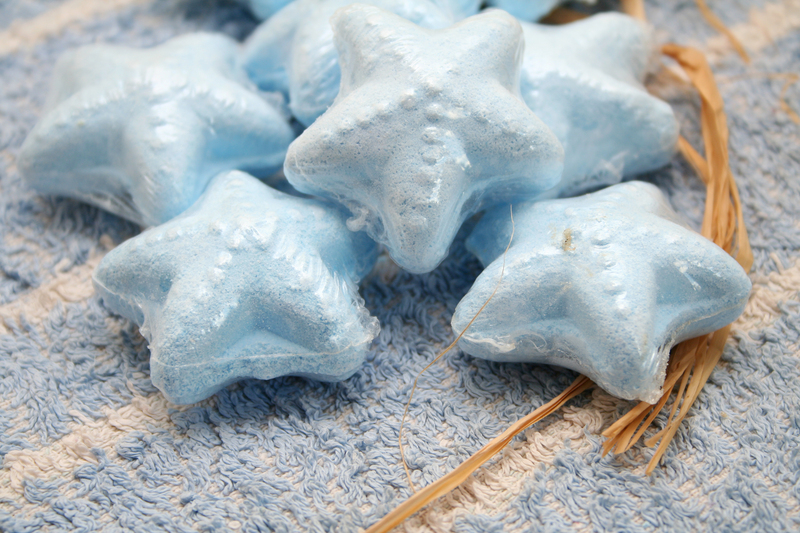Master the Art of Cleaning Mould from Window Sills
Posted on 12/09/2025
Master the Art of Cleaning Mould from Window Sills: Expert Tips & Step-by-Step Guide
Mould on window sills is more than just an unsightly nuisance; it can damage your home's aesthetics, pose health risks, and gradually weaken window structures. Whether you're dealing with persistent black mould stains or occasional spots after a humid season, learning how to clean mould from window sills correctly is crucial for maintaining a healthy and beautiful living environment.
In this all-inclusive guide, you'll discover everything you need to master the art of mould removal from window sills. This article covers underlying causes, essential cleaning tools, step-by-step methods, preventive strategies, safety tips and more. Read on to ensure your window sills sparkle--free from mould and mildew!
Why is Mould on Window Sills Such a Problem?
Mould is a type of fungus that thrives in moist, poorly ventilated environments. Window sills are especially vulnerable due to condensation and water leaks. Here's why you should take cleaning window sill mould seriously:
- Health Risks: Mould spores can trigger allergies, asthma, respiratory infections, and worsen existing health conditions.
- Property Damage: Prolonged mould growth can discolour window frames, damage paint, and even weaken surfaces.
- Odour: Mould often brings unpleasant musty smells into your living space.
- Aesthetic Issues: Visible black, green, or white spots make windows look unclean and neglected.
Common Causes of Mould on Window Sills
- Condensation: Water droplets collect on glass and wood due to temperature differences between indoors and outdoors.
- Poor Ventilation: Limited airflow causes humidity to build up, creating ideal mould-breeding conditions.
- Leaks: Cracks or gaps allow water to seep in during rainstorms.
- Lack of Regular Cleaning: Dust and dirt accumulate, fostering an environment where mould can flourish.
Addressing the root causes makes window sill mould cleaning more effective and lasting.

Essential Safety Precautions Before Cleaning Mould
Always prioritize your health and safety when you remove mould from window sills. Mould spores can easily become airborne and may pose health hazards when inhaled or touched.
Wear Protective Gear
- Gloves: Rubber or disposable gloves shield your hands from harmful spores and harsh cleaners.
- Face Mask: A quality mask (N95 or higher) prevents you from inhaling microscopic spores.
- Goggles: Eye protection is crucial if working with strong cleaning agents or in dusty conditions.
Proper Room Preparation
- Ventilate: Open windows and doors, if safe to do so, or use a fan to direct spores outdoors.
- Cover Surroundings: Lay down old towels or plastic sheeting to protect nearby areas from splashes and spores.
- Remove Curtains/Blinds: Wash them separately if contaminated.
Dispose of Contaminated Materials Safely
- Put disposable items (cloths, wipes, gloves) in a sealed plastic bag before discarding.
- Wash your hands thoroughly after handling mouldy materials.
How to Clean Mould from Window Sills: Step-by-Step Process
Effective window sill mould removal depends on using proven cleaning techniques. Many homeowners wonder if it's better to use commercial mould removers or homemade solutions--this guide covers both, so you can choose what suits you best.
Tools & Supplies You'll Need
- Protective gloves, mask, and goggles
- Bucket with warm water
- Sponges or soft scrub brushes
- Old towels or microfibre cloths
- Spray bottle
- Cleaning solutions (see below)
- Small scrapers (for stubborn mould)
Popular Cleaning Solutions for Window Sill Mould
- White Vinegar: Acidic and natural, vinegar is effective for most household mould.
- Baking Soda: Removes odours and acts as a mild abrasive.
- Hydrogen Peroxide (3%): Disinfects and kills mould spores on contact.
- Commercial Mould Removers: Specially formulated sprays for tough stains or larger infestations.
- Soap and Water: For lighter, newly formed mould patches.
Step-by-Step: Remove Mould from Window Sills
- Put on all protective gear.
- Open the window (unless it's unsafe or raining) for ventilation.
- Dry Brush: Using a soft brush, gently loosen surface mould. Be careful to avoid spreading spores.
- Mix Your Chosen Cleaning Solution:
- For vinegar: Fill a spray bottle with undiluted white vinegar.
- For hydrogen peroxide: Use 3% solution, poured straight into a spray bottle.
- For baking soda: Mix a teaspoon with water to form a paste, or dissolve in water.
- Spray the Affected Area: Generously coat the mould patches. Let the solution sit for at least 10-15 minutes to break down the mould.
- Scrub Gently: Wipe or scrub using a sponge or soft brush until the mould lifts. For stubborn spots, reapply the solution and gently scrape if needed.
- Wipe and Rinse: Use a clean damp cloth to wipe away residues. Ensure no cleaning solution or traces of mould remain.
- Dry Thoroughly: Mould thrives on moisture, so ensure the sill is completely dry. Use a dry towel or leave the window open to air-dry.
- Repeat if Needed: Some stains might need more than one treatment to disappear completely.
Special Considerations for Different Materials
Wooden Window Sills
- Be Gentle: Excess moisture can warp wood. Use as little liquid as possible and dry promptly.
- Avoid Bleach: Bleach may damage wood finishes over time.
- Sand and Reseal: Severely affected wood may need sanding and resealing after cleaning to prevent further damage.
UPVC or Vinyl Window Sills
- Use Mild Solutions: Harsh cleaners can dull or scratch plastic surfaces.
- Magic Eraser: For persistent staining, a soft magic eraser can help lift dark spots.
Painted Window Sills
- Test First: Try your cleaning solution on an inconspicuous area to avoid damaging paint.
- Touch Up: Repaint areas if mould permanently stains or lifts your paintwork.
How to Prevent Mould on Window Sills in the Future
Prevention is the key to keeping window sills mould-free in the long term. Make these simple, effective habits part of your routine:
Improve Ventilation
- Open windows whenever weather and safety allow.
- Install extractor fans in high-humidity rooms like kitchens and bathrooms.
- Use dehumidifiers to reduce moisture in particularly damp spaces.
Reduce Condensation
- Wipe down condensation on windows each morning in winter.
- Insulate windows with double glazing where possible.
- Keep furniture away from external walls to allow better air flow.
Regular Cleaning
- Wipe sills once a week with a microfibre cloth to remove dust and moisture.
- Inspect window frames and seals; repair cracks and replace failing caulking promptly.
Houseplants & Mould
- Limit how many water-loving houseplants you keep on or near window sills, as they raise local humidity.
- Check often for fungal build-up in plant soil, watering trays, and nearby surfaces.
Frequently Asked Questions About Cleaning Mould from Window Sills
Is It Safe to Remove Window Sill Mould Myself?
In most cases, yes--especially if the mouldy area is less than 1 square metre. For severe infestations or if you have health issues, consider professional help.
Will Bleach Kill Mould on Window Sills?
Kills surface mould but may not address underlying spores on porous materials like wood. For best results, combine cleaning with preventive measures.
Why Does Mould Keep Coming Back?
Persistent moisture is usually the culprit. Make sure to eliminate sources of condensation or leaks and keep the area well-ventilated after cleaning.
Can I Paint Over Mould?
Never paint over visible mould. You must clean and treat the area thoroughly first, or the mould will grow back beneath the paint and could spread further.

When to Seek Professional Help
If you encounter any of the following, it's better to call in professional mould remediation experts:
- The affected area is larger than 1m? (about one square yard).
- The mould returns quickly after cleaning.
- You have difficulty breathing, allergies, or health conditions aggravated by exposure.
- Mould is growing behind walls, under flooring, or within insulation.
Conclusion: Mastering Window Sill Mould Cleaning for a Healthier Home
Now you're equipped with the best techniques to clean mould from window sills like a pro. By following the steps above and prioritizing prevention, safety, and consistent care, you not only improve your home's appearance but also protect your family's health for years to come. Remember, persistence pays off--regular inspections and cleaning can keep even stubborn window sill black mould at bay.
Say goodbye to unsightly stains and unpleasant odours. Take charge of your home, and embrace the art of mould removal for sparkling, healthy window sills every season!
Useful Resources & Further Reading
If you found this comprehensive guide on cleaning mould from window sills helpful, consider sharing it with friends or family who might benefit, and bookmark for quick reference!




